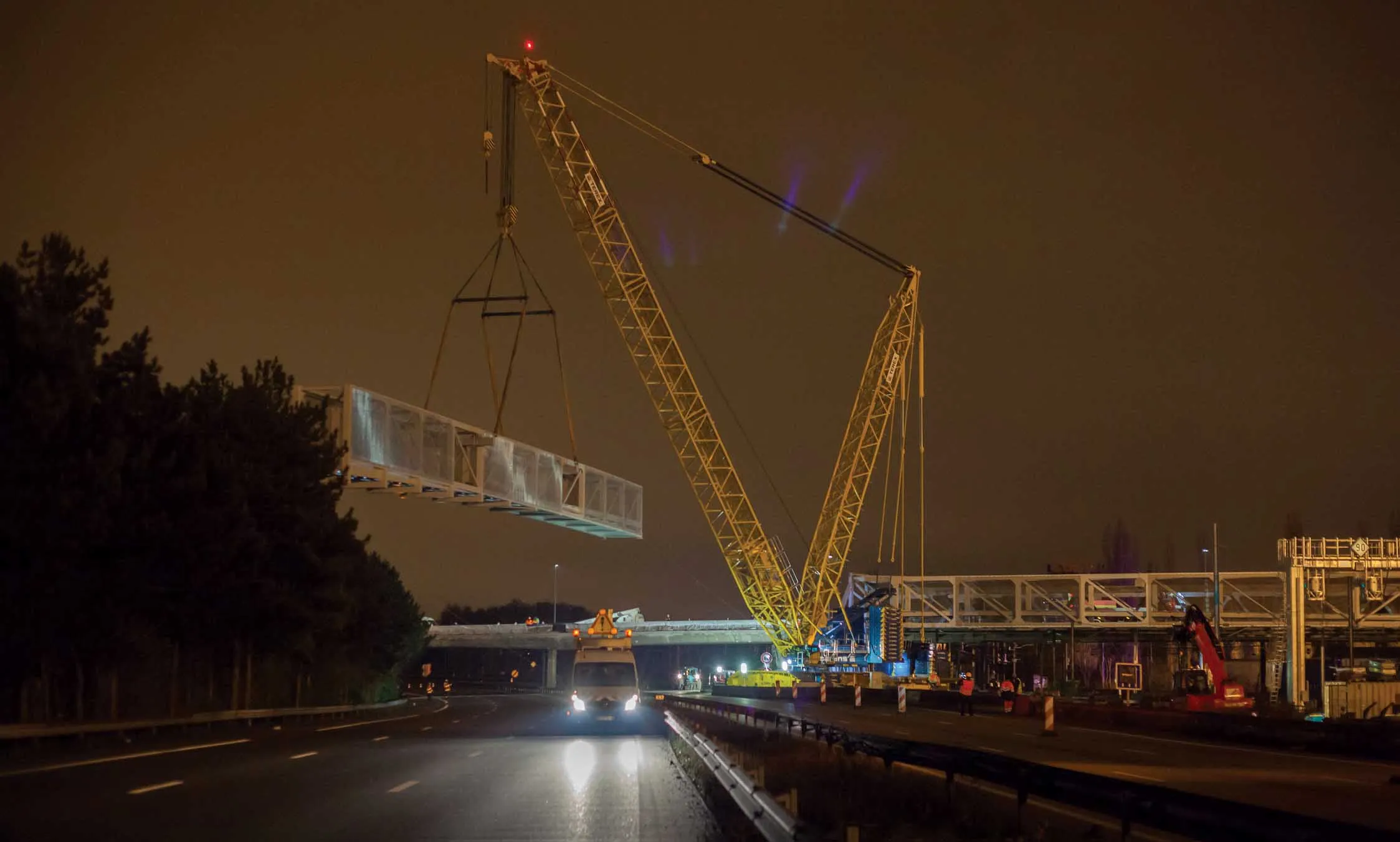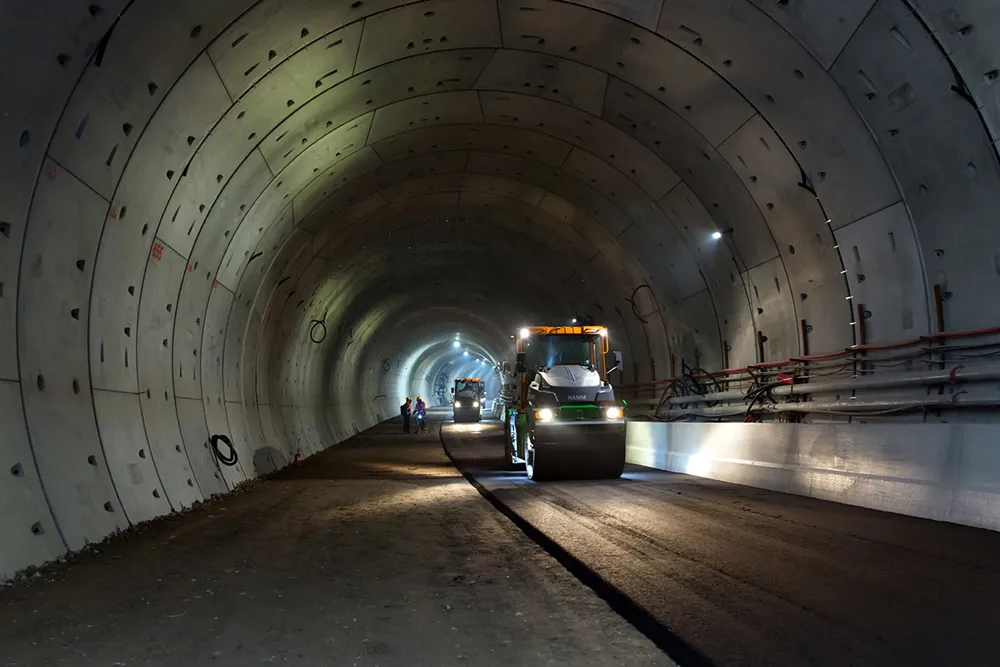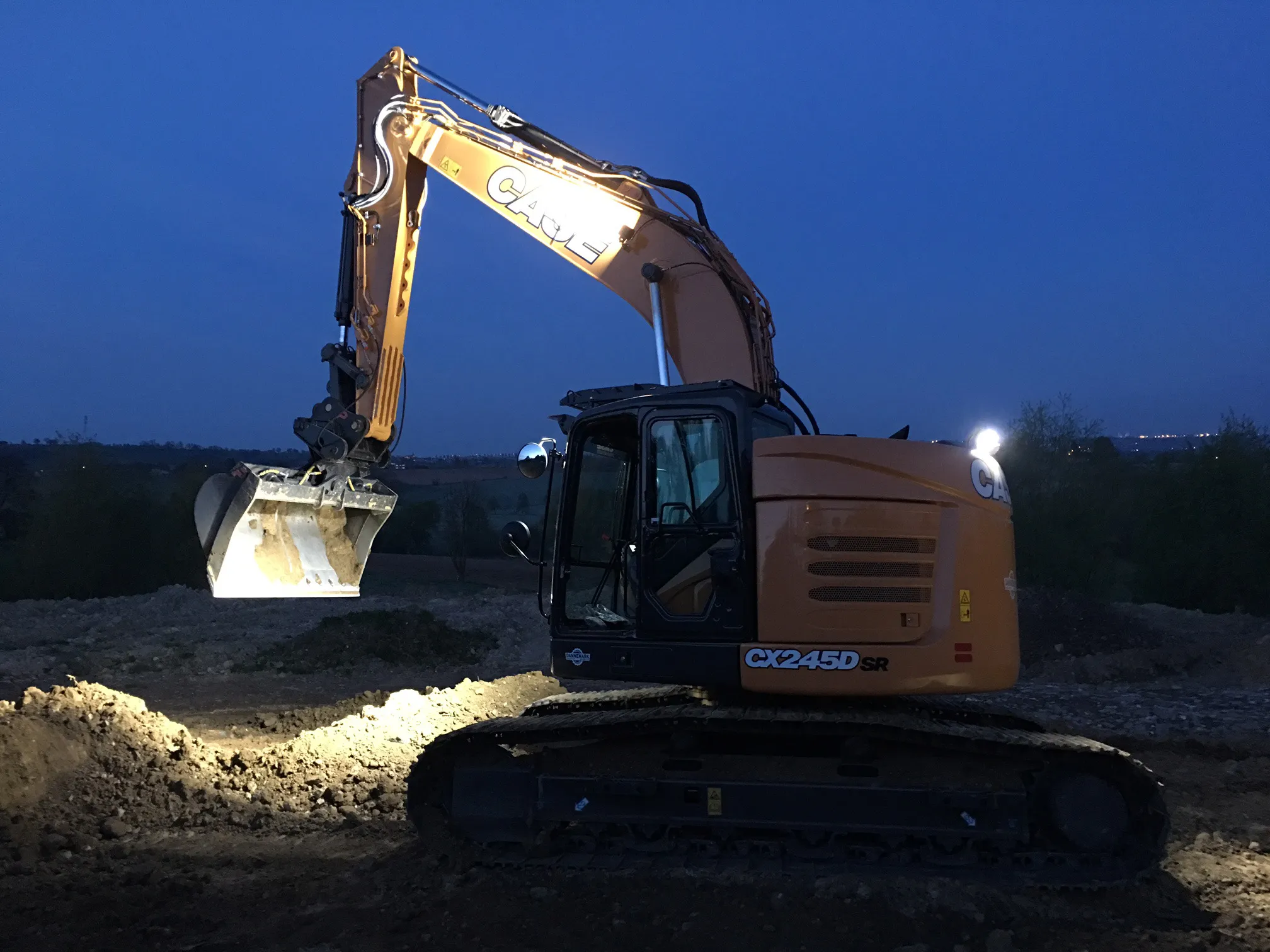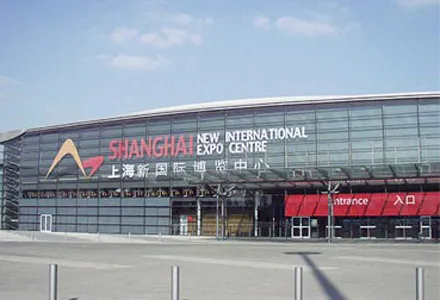Crane service provider Sarens has used a Terex Superlift 3800 lattice boom crawler crane to lift a pedestrian and bicycle steel bridge over the A4 Autoroute near Schiltigheim, in the Aisace region of France.
The job was out of the ordinary, according to the Sarens Group, a transport and specialised rigging specialist based in Wolvertem, Belgium. “We didn’t have a special permit for a heavy-load transport with the required weight,” said Sarens project manager Joost Elsen.
May 14, 2015
Read time: 4 mins

Crane service provider Sarens has used a 1222 Terex Superlift 3800 lattice boom crawler crane to lift a pedestrian and bicycle steel bridge over the A4 Autoroute near Schiltigheim, in the Aisace region of France.
The job was out of the ordinary, according to the Sarens Group, a transport and specialised rigging specialist based in Wolvertem, Belgium. “We didn’t have a special permit for a heavy-load transport with the required weight,” said Sarens project manager Joost Elsen.
The first problem was getting the crane to the site in Schiltigheim, the largest suburb in the city of Strasbourg in north-east France, near the German border.
A special feature of the Superlift 3800 crane made it possible to overcome this challenge. Then “Quick Connection” makes it possible to disassemble the crane’s basic structure into two parts in order to significantly reduce the weights involved in transporting the machine.
Even so, a total of 56 transport vehicles were required to transport equipment for the job. Logistics were further complicated because the access road to the site was extremely narrow. Trucks had to drive on a gravel road for about 1km – in reverse – to reach the spot where the crane would be set up.
Despite this time-consuming procedure, the Sarens team was able to get the Superlift 3800 crane ready on time with four assembly technicians and the crane operator. “The crane’s ease of assembly literally paid for itself in this case,” Elsen said.
Since it required for the highway to be completely closed near Strasbourg, the team did not want to risk any delays. In order to affect traffic as little as possible, the lift was performed on a Saturday night.
To be sure of their ability to complete the task in time, they carried out a trial lift of the 162tonne bridge section in advance in order to test the crane, as well as the load-securing devices that would be used.
Another complication loomed. The crane operator would have only a 22m-wide area between the highway and parallel train tracks in which to maneuvre.
Sarens technicians set up the Superlift with an SSL1 configuration, a 54m main boom and 325tonnes of counterweight to allow the machine to pick up the bridge section within a working radius of 40m.
In order to prevent the 65m-long and 3.5m-wide load from swinging around when lifted, it was slung to a perfectly balanced spreader. This enabled the crane operator to safely lift the component 20m high. The main boom was then raised to reduce the working radius to 29m and then lower the Superlift counterweight radius from 18m to 11m.
With this compact configuration, the crane could turn 180° within the tight working area and swing the bridge over the highway. “To do this, we used the crane’s Vario Superlift system, which was developed precisely for this scenario,” said crane operator Michael Bräckle.
Once the bridge was over the highway, the crane moved forward about 12m under load to its final destination. The main boom was brought down and the Vario system was used to bring the SL counterweight back to a radius of 18m.
Finally, the bridge was lowered onto the bridge piers at the original working radius of about 40m.
Sarens is called upon from time to time to do close-up work and the company has three of the 650tonne Superlifts 3800 cranes in its fleet. All have a maximum load moment of 8.426m-tonnes and as standard come with the Terex fall protection system.
The Superlift 3800 crawler crane can be delivered with a main boom with an integrated wind kit, enabling it to erect wind turbines with a height of up to 117m without the need for a Superlift configuration. The required LH 114m + 12m LF configuration can be set up without the need for an assist crane.
The crane complies with European standard EN 13000 and US standard ASME B30.5.
The job was out of the ordinary, according to the Sarens Group, a transport and specialised rigging specialist based in Wolvertem, Belgium. “We didn’t have a special permit for a heavy-load transport with the required weight,” said Sarens project manager Joost Elsen.
The first problem was getting the crane to the site in Schiltigheim, the largest suburb in the city of Strasbourg in north-east France, near the German border.
A special feature of the Superlift 3800 crane made it possible to overcome this challenge. Then “Quick Connection” makes it possible to disassemble the crane’s basic structure into two parts in order to significantly reduce the weights involved in transporting the machine.
Even so, a total of 56 transport vehicles were required to transport equipment for the job. Logistics were further complicated because the access road to the site was extremely narrow. Trucks had to drive on a gravel road for about 1km – in reverse – to reach the spot where the crane would be set up.
Despite this time-consuming procedure, the Sarens team was able to get the Superlift 3800 crane ready on time with four assembly technicians and the crane operator. “The crane’s ease of assembly literally paid for itself in this case,” Elsen said.
Since it required for the highway to be completely closed near Strasbourg, the team did not want to risk any delays. In order to affect traffic as little as possible, the lift was performed on a Saturday night.
To be sure of their ability to complete the task in time, they carried out a trial lift of the 162tonne bridge section in advance in order to test the crane, as well as the load-securing devices that would be used.
Another complication loomed. The crane operator would have only a 22m-wide area between the highway and parallel train tracks in which to maneuvre.
Sarens technicians set up the Superlift with an SSL1 configuration, a 54m main boom and 325tonnes of counterweight to allow the machine to pick up the bridge section within a working radius of 40m.
In order to prevent the 65m-long and 3.5m-wide load from swinging around when lifted, it was slung to a perfectly balanced spreader. This enabled the crane operator to safely lift the component 20m high. The main boom was then raised to reduce the working radius to 29m and then lower the Superlift counterweight radius from 18m to 11m.
With this compact configuration, the crane could turn 180° within the tight working area and swing the bridge over the highway. “To do this, we used the crane’s Vario Superlift system, which was developed precisely for this scenario,” said crane operator Michael Bräckle.
Once the bridge was over the highway, the crane moved forward about 12m under load to its final destination. The main boom was brought down and the Vario system was used to bring the SL counterweight back to a radius of 18m.
Finally, the bridge was lowered onto the bridge piers at the original working radius of about 40m.
Sarens is called upon from time to time to do close-up work and the company has three of the 650tonne Superlifts 3800 cranes in its fleet. All have a maximum load moment of 8.426m-tonnes and as standard come with the Terex fall protection system.
The Superlift 3800 crawler crane can be delivered with a main boom with an integrated wind kit, enabling it to erect wind turbines with a height of up to 117m without the need for a Superlift configuration. The required LH 114m + 12m LF configuration can be set up without the need for an assist crane.
The crane complies with European standard EN 13000 and US standard ASME B30.5.








